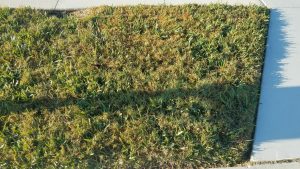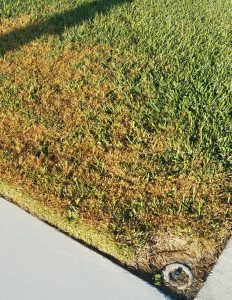Stressed Grass Shouldn’t Stress Floridians This Winter
If you live in Sarasota, Manatee or Charlotte counties, you might be seeing parts of your lawn turning brown this winter season. It’s stressed grass but not to worry. As temperatures drop to the 40s and occasional 30s, the growth of St. Augustine turf slows greatly, and it’s not as vibrant green as it is in the summer. There are, however, a couple of other issues that may affect the color of your turf: Bermudagrass and carpetgrass intrusion. During Florida’s warm summer months, this is much less noticeable because these grasses are nice and green. But as temperatures drop, they lose color before the St. Augustine does, causing your turf to have uneven color, or what even appears to be dead spots.
How do you know your stressed grass is carpetgrass? Easy. Just look for the pale green or yellowish green color. It is one of the first grasses to turn brown when the temperature is cool and the last to green up in Spring. There are no herbicides currently on the market that are available to control carpetgrass or Bermudagrass intrusion, as they will also kill your St. Augustine grass. Unfortunately, this means that the only solution is to remove and re-sod the affected areas. This is costly and not typically covered by homeowner associations or landscape maintenance providers, so you need to ask yourself if it’s really bothering you that much. Chances are you can live with your stressed grass if you know it will come back green.
Bottom line: Uneven turf color occurs every winter in Southwest Florida, and natives will tell you that affected areas almost always return to green as the winter season ends. So please don’t stress. Let Mother Nature run her course, and come Spring, your lawn will return to its uniform shade of rich, vibrant green. If you still have questions, contact your local nursery or landscape maintenance company.

Bermudagrass

Carpetgrass
Category Frost Protection, Landscape Maintenance, News, Turf Care
Tagged with: brown spots in turf, brown grass, dormant grass, Bermudagrass, carpetgrass


